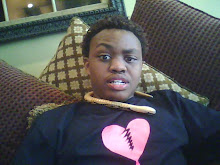ObjectivesBefore planning the teacher's training, we should first specify the goals we want to achieve. People may have different views, but according to my own experience with OLPC learning process in Rwanda, I think they need know not necessary how to manipulate XO and its built-in software but how to use this technology to ease their lessons. Each teacher should be able to use the most basic and multi-task XO software (I will define what programs I think are more fundamental) since we have only one week of training. Note also that it's not a very good idea to overload the material to the beginners.
To-teach list1.Record: Elementary school students develop their knowledge much better through visual elements, and pictures can be inserted in a plenty of activities; so Record should definitely be taught.
2.Write: In any activity, you need to type at least the name of the project, so they should know how use keys like Shift in order to capitalize or something else. They need to know to create tables (which easier to collect a database) , to change the font, the color of the text...
3.E-toys: when I get to talk about E-toys, that when I use the term multi-task software, because it helps to make an infinite number of pages in more organized way. You can assign a topic to each page (for example a geography book, having a page for rivers, another for climate, two pages for eclipse and so forth). You can what other activities do, for insistence painting/drawing (Paint), writing (Write), coding (scratch or turtle art).
Training planningDAY 1: Quick facts about XO (how to open the laptop, role of antennas, capacity, journal, shortcuts keys to home, to network, screen max/min, battery, saving/keeping)
DAY 2: Record and Write. This would the time to teach them these activities and network. They would take a picture of themselves in Record and use to write their short biography and then share them with 3 other people. A then end, we can do an application of making a pictionary that consist of different subjects (geography, math, english,...). Assign them homework.
DAY 3: Help to fix the problem they encountered in their homework. Introduce E-Toys and show them how if they a lot of stuff to write E-toys Book would have been easier. Introduce the painting tool in E-toys. Divide them into groups where they would be required to come up with a lesson/topic and show how they can teach it with the laptop.
DAY 4: Help them for some issues. Let each group present their work. CLOSE!!!!


